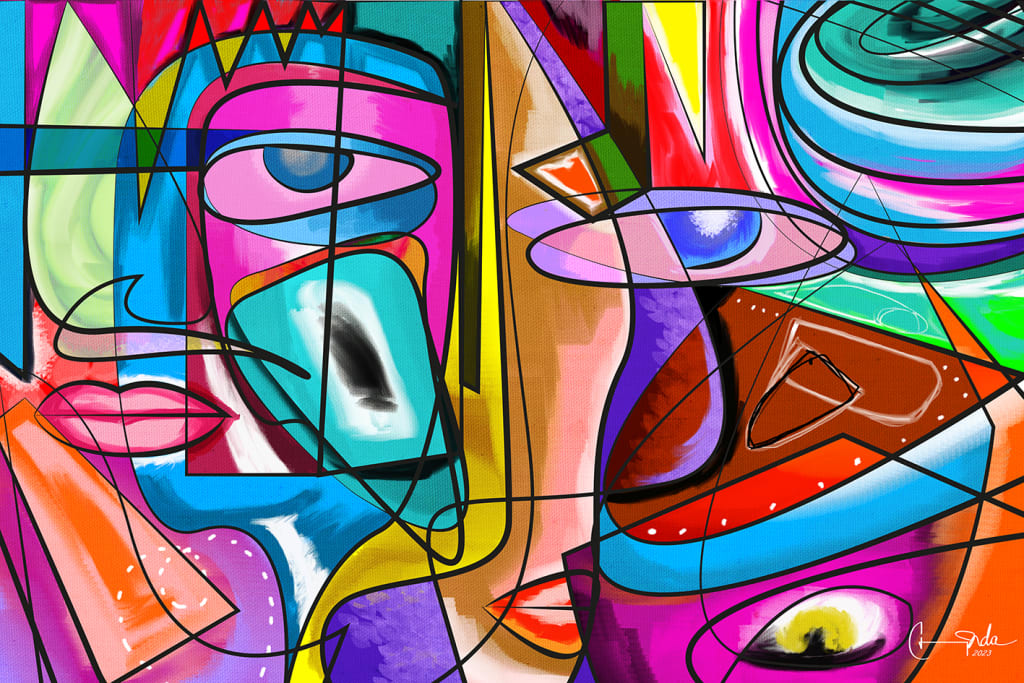Abstract Painting
Make your own Abstract Painting

Abstract painting is a captivating form of artistic expression that allows artists to break free from the confines of representational art and delve into the realm of imagination, emotions, and ideas. Through the use of colors, shapes, lines, and textures, abstract paintings can evoke profound emotions, spark intellectual curiosity, and provide viewers with a unique visual experience. If you're interested in exploring the world of abstract painting, here are some guidelines to help you get started on your artistic journey.
Embrace Freedom and Intuition:
Abstract painting is all about embracing freedom and allowing your intuition to guide your creative process. Unlike representational art, abstract painting doesn't require you to depict specific objects or scenes. Instead, it encourages you to tap into your subconscious mind, explore emotions, and let your inner self guide your brushstrokes. Give yourself permission to experiment, take risks, and let go of preconceived notions of what a painting should look like.
Start with Inspiration:
Before diving into your painting, seek inspiration from various sources. Explore other abstract artists' works, visit galleries, museums, or browse through art books and online platforms. Pay attention to the use of color, composition, and techniques employed by different artists. Additionally, draw inspiration from the world around you—nature, music, literature, or personal experiences. Allow these sources to fuel your creative ideas and give your painting a unique voice.
Choose Your Tools and Materials:
Abstract painting can be done using various mediums, such as acrylics, oils, watercolors, or mixed media. Experiment with different materials to find the one that resonates with your artistic vision. Additionally, gather a variety of brushes, palette knives, sponges, or any other tools that you feel drawn to. These tools will help you create different textures, apply layers, and express your artistic intentions on the canvas.
Play with Colors:
Colors are one of the most powerful elements in abstract painting. They have the ability to convey emotions, set the mood, and create visual impact. Explore different color schemes—monochromatic, complementary, analogous, or triadic—and experiment with how they interact with each other. Consider the psychological effects of colors and how they can evoke different emotions in the viewer. Remember that there are no rules when it comes to colors in abstract art; let your intuition guide your color choices.
Compose of Shapes and Lines:
Abstract painting offers endless possibilities for creating unique shapes and lines that become the building blocks of your composition. Consider using geometric shapes, organic forms, or gestural lines to convey movement, balance, or tension. Play with the scale and placement of these elements to create a visually engaging composition. Remember that each shape and line contributes to the overall visual impact of your painting.
Experiment with Texture and Layers:
Texture adds depth and tactile interest to your abstract paintings. Explore different techniques to create texture—such as applying thick impasto layers, using palette knives, or incorporating various texturing mediums. Experiment with layering your paint, allowing underlying colors and shapes to peek through. This technique adds visual complexity and richness to your artwork.
Developing a Sense of Balance:
Even in the realm of abstraction, balance is key. Strive for a harmonious relationship between elements in your composition. Consider the distribution of visual weight, the placement of focal points, and the overall equilibrium of your painting. Balancing contrasting elements, such as light and dark values, vibrant and muted colors, or bold and subtle textures, can create a sense of tension and visual interest.
Trust the Process and Reflect:
Abstract painting is an ongoing process of exploration and self-discovery. Trust your instincts and embrace the journey, even if it takes unexpected turns. Allow your painting to evolve organically, and don't be afraid to make mistakes or take detours. Remember that abstract art is subjective, and each viewer may interpret your work differently. Take time to reflect on your paintings, analyze what works and what doesn't, and use this knowledge to refine your artistic practice.
Seek Feedback and Learn from Others:
Art is a communal experience, and seeking feedback from others can provide valuable insights into your work. Share your paintings with fellow artists, art communities, or art instructors who can offer constructive criticism and encouragement. Attend workshops, exhibitions, or art classes to learn from experienced artists and expand your artistic horizons. Engaging with the art community can inspire you, foster growth, and open doors to new possibilities.
Embrace Your Unique Voice:
Above all, embrace your unique voice as an abstract artist. Your paintings are a reflection of your emotions, experiences, and perspective on the world. Allow your authenticity to shine through on your artwork and create pieces that resonate with your inner self. Remember that the beauty of abstract art lies in its ability to elicit individual interpretations and emotional connections.
Abstract painting offers a boundless realm of creativity, experimentation, and self-expression. By following these guidelines and infusing your own unique ideas and experiences, you can embark on an abstract painting journey that not only nurtures your artistic abilities but also invites viewers to embark on their own imaginative and emotional voyages.
About the Creator
chaminda senanayake
I am an artistic wordsmith who possesses a deep passion for art and the internet. With their creativity and love for writing, they skillfully translate the beauty of various art forms into captivating content and immersive stories.






Comments
There are no comments for this story
Be the first to respond and start the conversation.